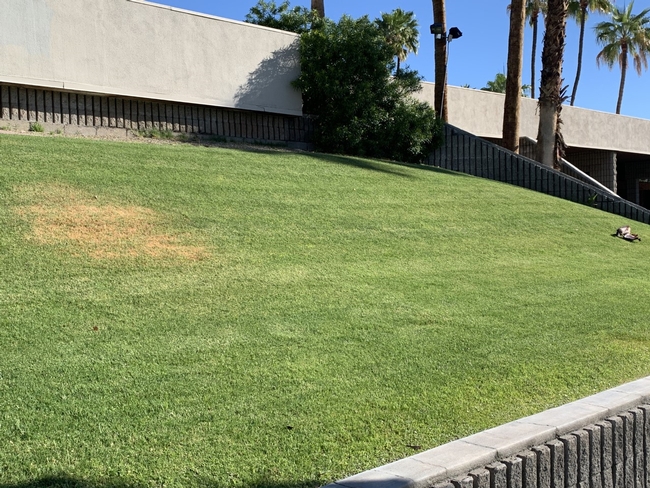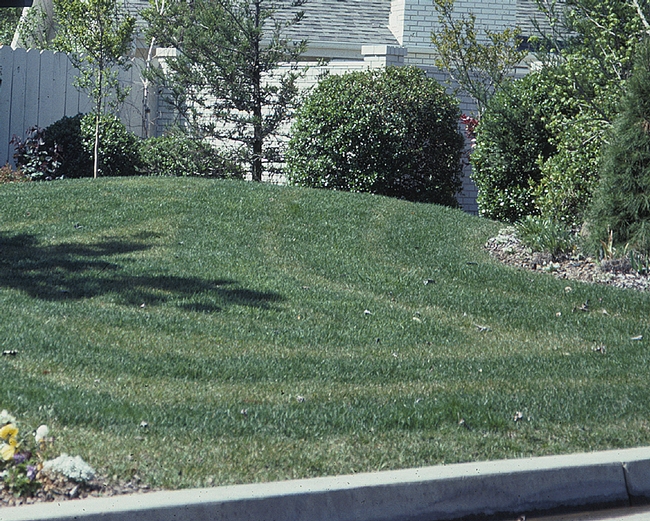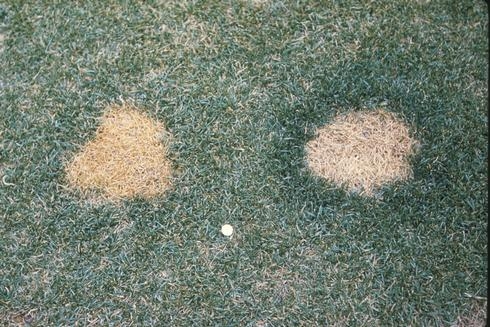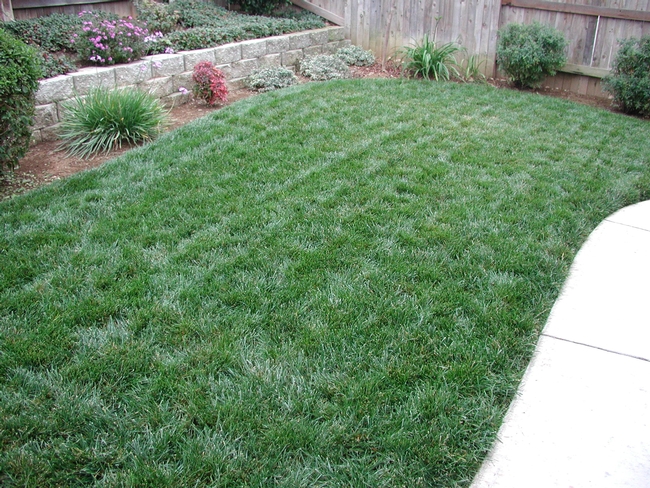Your customers want their lawns to be beautiful and functional (Figure 1) but dead patches or other problems sometimes occur. Figuring out the cause of turfgrass damage can be a challenge since many plant pathogens affect grasses as well as numerous abiotic (non-living) disorders. can impact the quality of lawns, playing fields, and other turf areas.
Keeping turfgrass healthy is essential for reducing damage due to both diseases and abiotic disorders. Following recommended practices regarding irrigation scheduling, integrated pest management, fertility, mowing height, soil aeration, and other measures is your customer's best line of defense.
Identify the cause of unhealthy grass
Ask your customer the following questions to help determine whether the cause is due to abiotic or biotic issues.
- Is the problem confined to one area or across the entire lawn?
- When did the problem begin? Could it be seasonal?
- Have there been unusual changes in the climate or microclimate?
- What are the lawn care practices? Have there been recent changes?
Some answers to these questions include:
- Too much or too little water that may impact several plant species irrigated on the same valve as the turf.
- Herbicide injury and fertilizer applications can also impact several plant species growing in the lawn area.
- Many fungi resulting in plant diseases are confined to one species of turf and often do not impact surrounding plants.
Knowing that damage from abiotic causes does not spread can be helpful. Disease and insect infestations almost always spread outward from the initial point of damage. Also, diseases and insects can often be identified by specific symptoms.
In addition to the symptoms, damage from diseases often leave telltale signs of the pathogen. Examples include light colored cotton-like growth on leaves, areas of chlorotic (yellow) grass surrounding healthy appearing grass, rotted roots and crowns, and hard structures called sclerotia.
Common Causes of Abiotic Disorders

Nutrients. While over-fertilized lawns often show no damage symptoms, nitrogen-deficient lawns appear chlorotic, thin, and are more prone to fungal diseases such as dollar spot. Most turfgrass needs nitrogen fertilization during the active growing season to stay healthy and attractive. For specific turf recommendations, see the UC Guide to Healthy Lawns at ipm.ucanr.edu/TOOLS/TURF/

Micronutrients such as iron and zinc may also be required. Keep in mind that these and other micronutrients may be temporarily “tied up” in the soil due to high pH (alkaline) but become available to the plant if pH is reduced by adding sulfur or ammonium sulfate.
Another common type of fertilizer damage occurs from uneven application of nitrogen-containing fertilizers across the turf. This results in streaks of dark green grass next to skipped areas that remain light green and later turn yellow (Figure 3).
Dog Urine. Damage from animal urine (especially dogs) occurs most often on dry turf, especially during periods of high temperatures and prolonged drought. Cool season grasses tend to be more impacted since they require 25% more water than warm season grasses. Damaged turf appears wilted and grayish-green initially. Soon it becomes brown and may die depending on concentration, type of grass, turf hydration, and water leaching. Typical damage is a small center of brown grassless than 6 inches apart surrounded by a dark green ring (Figure 4). Contrary to popular lore, female dogs are not the only canine culprit, since puppies of both sexes squat the first year or so of life.

While damage from animal urine can resemble that from dollar spot and other fungal diseases, it has a darker green outer ring that is often much taller than the surrounding grass and does not have fungal structures called mycelium (Figure 4).
For specific information on managing lawn damage caused by dog urine, see UC ANR Publication 8255 “Lawns ‘n' Dogs” at anrcatalog.ucanr.edu/Details.aspx?itemNo=8255.
Remember that proper turf maintenance can greatly reduce the incidence of abiotic and biotic disorders and that more than one factor may be responsible for the damage. Since both insects and diseases often attack plants already stressed by abiotic factors, addressing abiotic disorders is essential to reducing the impact of insects and diseases. Grass that is already suffering from abiotic disorders can be susceptible to disease. This can result in pest and disease outbreaks that otherwise may have been avoided. See to ipm.ucanr.edu for UC IPM Pest Notes that can help you identify both biotic and abiotic problems.
[Original article published in the Spring 2020 issue of the Retail Newsletter]
